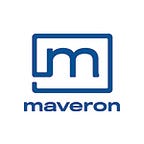Maveron has a 20-year history of backing brands that have become iconic in their earliest days. These have ranged from eBay, Zulily, and Shutterfly to more recently, backing Allbirds, Dolls Kill, Everlane, Imperfect Produce, and Inkbox. Picking consumer startups that navigate the journey from obscurity to ubiquity is fraught with both risk and uncertainty but it is far from arbitrary. We focus on investing in consumer brands, and in this blog post, we’re lifting up the hood to reveal the framework around what gets us excited when leading a Series A investment round, with a particular focus on physical product companies. The approach is divided into three parts, which we’ll cover over the next three weeks — 1) identifying natural advantages in brand building, 2) the specific metrics we look for in funding a Series A company, and 3) founder profiles.
Types of Natural Advantages in Brand Building
It is cheaper and easier than ever to launch a brand, which means the market is overcrowded, and the majority of new brands are never able to break away from the noise. The ones that do break out usually possess a natural advantage, which from our observations, typically falls into five categories:
- Great Storytelling. Sometimes a story just sells itself or a founder has an amazing ability to spin a yarn. Dollar Shave Club’s single viral video drove significant adoption. More recently, Allbirds created a sensation in the press with “the world’s most comfortable shoe.” When you make that type of claim, you need the product to live up to expectations, and Allbirds certainly does. This combination leads to a virtuous loop — the press writes about the product’s special trait, people buy it on that premise, they’re delighted that it delivers and so they share it on social media and then the brand inevitably garners more press.
- Purpose Driven. Increasingly, consumers (especially millennials and Gen Z), want to associate with brands that stand for something. The world is becoming increasingly tribal and people associate with brands that represent their tribe. We’ve seen this trend with Patagonia’s active stance on the environment and Hobby Lobby’s stance against paying for contraception in its health package for employees. Within our portfolio, Everlane stands for radical transparency — on both its pricing and on how its factory workers are treated ethically. Imperfect Produce prominently features the pounds of food saved and money saved on groceries in its advertising and in its communication to customers. When it comes to authentically demonstrating purpose, we believe a brand is most likely to build organic buzz and build a movement of engaged customers and brand advocates if it is first to market with a message — for example, talking about radical transparency or food waste before other companies hop on the bandwagon.
- Founder With an Existing Mouthpiece. The classic example of the advantaged founder is Martha Stewart, who launched physical products after building a big, established media brand. Advantaged founders can be celebrities like Gwyneth Paltrow with Goop or Kylie Jenner with Kylie Cosmetics. They can also be well-known bloggers or other Internet influencers with a loud mouthpiece like Emily Weiss of Glossier.
- Social Media Virality / Word of Mouth. Some of the hottest brands today have leveraged social media and influencer marketing to scale in a very capital efficient way. Ipsy classically comes to mind as a brand that used influencers to build a more valuable business and scale without a dependency on paid marketing compared to its competitor Birchbox, the early category leader. Within our portfolio, Dolls Kill has used Instagram to engage with a network of over two million followers, leading to a vibrant online community that talks about, buys, shares virally, and loves the brand.
- Category Creation / Intellectual Property (IP)-Backed Product Innovation. A classic example of category creation is Spanx, where founder Sara Blakely created a billion-dollar empire by pioneering shapewear. An example of IP-backed product innovation is Eargo — which has created an FDA approved hearing aid that is essentially invisible to the human eye. In the case of Spanx, the brand itself is the moat. With Eargo, the IP makes it virtually impossible to replicate for a fast follower.
